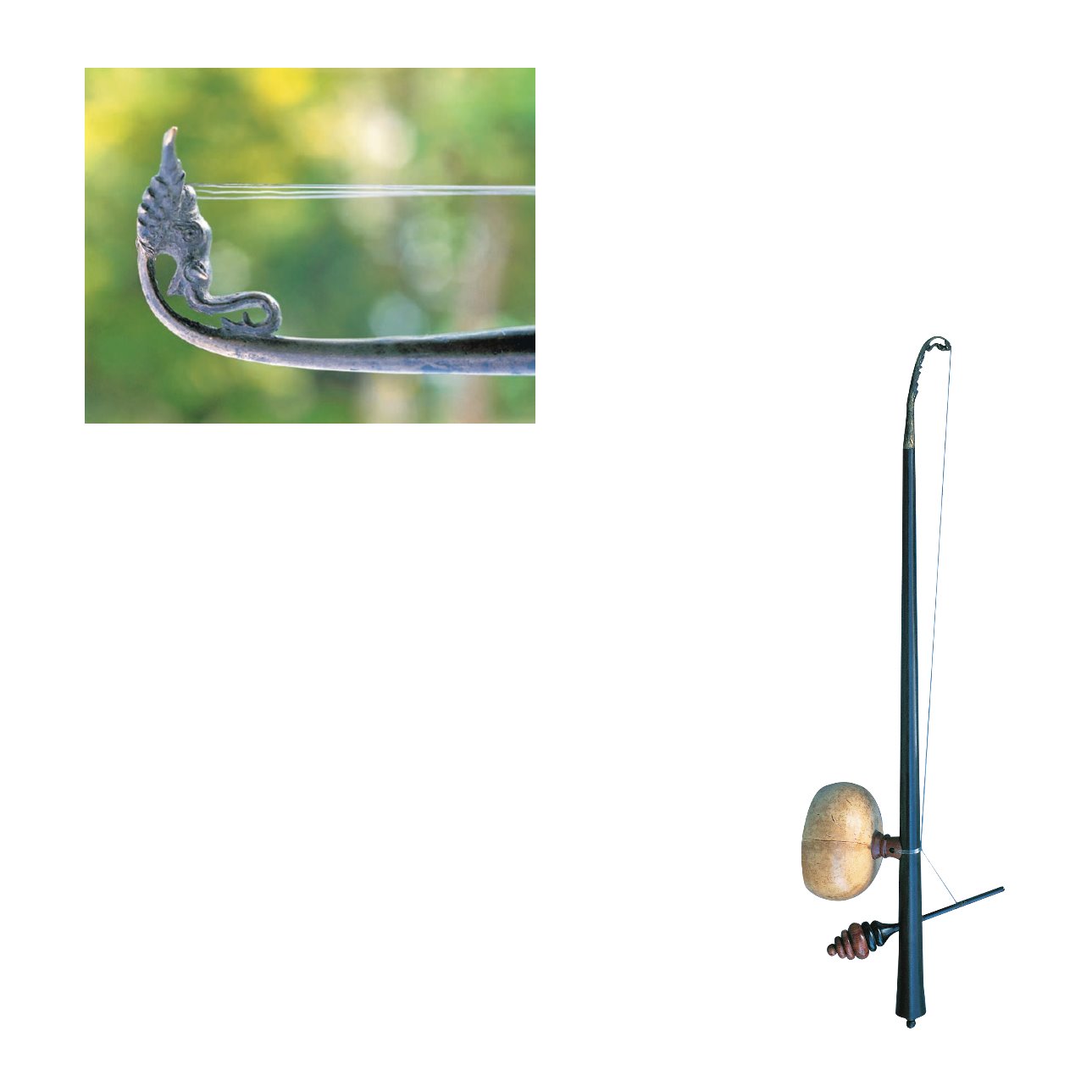

68
|
Culture Ways of Life and Wisdom
“
The top of Phin Pia is usually decorated
with a Hasadiling, an ancient bird living
in the Himavanta. It has an elephant-like
head, while its body is still a bird. According
to the Lanna beliefs, the bird is a very
powerful creature, equivalent to five elephants
and has a mission to bring the soul
of the merited people to heaven.
”
“
There is a say that Phin Pia is a flicked lute which
generates beautiful and light sounds. It is one of the most
difficult-to-play Lanna musical instruments. There is a Northern
musician’s metaphor “Practicing (Pin) Pia (Phin Pia) for 3 years,
learning to play but flute for 3 months” showing that to be able to
play Phin Pia beautifully, it needs technique, expertise, and training
for a very long time.
”
Based on the style that the Phin Pia’s head must be placed on
the bare chest, it is thus believed that this instrument is suitable for
male artists only. But according to an image engraved in stone of Ban
Khu Bua in Ratchaburi province, which is dated back to the Dvaravati
Civilization, it is evident that women could also play the lute as the
instrument on the stone look similar to Phin Pia. In addition, if it is not
convenient to attach the instrument to the chest, it can also be placed
on the abdomen instead.
At the present time, it is popular to play Phin Pia in the style of
“Pia Chum”
, which is, bringing 2-7 sets of Phin Pia to play together
as an ensemble. It is also played with other undertone instruments
such as Sueng, Salor or flute. Despite the number of Phin Pia’s player
are lesser than before, together they stand fast and maintain beautiful
melodiousness.


















